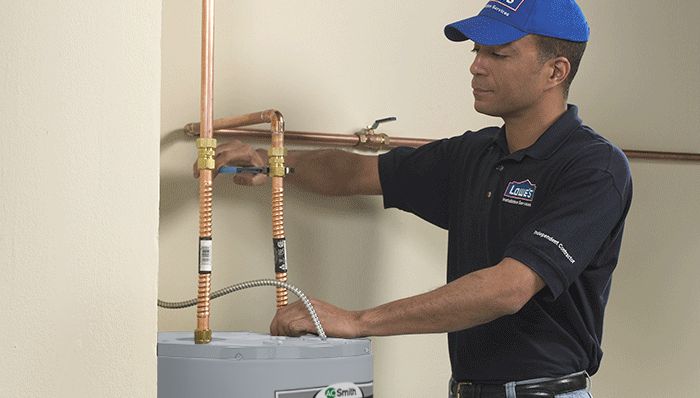Professional Tips for Caring for Your Home's Hot Water System
Professional Tips for Caring for Your Home's Hot Water System
Blog Article
Just how do you feel in relation to Tips For Maintaining Your Hot Water Heater?

Warm water is essential for day-to-day convenience, whether it's for a revitalizing shower or cleaning meals. To guarantee your warm water system runs effectively and lasts longer, regular upkeep is crucial. This post offers functional ideas and insights on exactly how to preserve your home's warm water system to prevent interruptions and costly repair work.
Introduction
Maintaining your home's hot water system may seem difficult, however with a couple of basic steps, you can guarantee it runs smoothly for many years ahead. This overview covers everything from comprehending your warm water system to do it yourself maintenance pointers and understanding when to call expert aid.
Value of Maintaining Your Warm Water System
Routine upkeep not only prolongs the lifespan of your hot water system but likewise guarantees it operates successfully. Disregarding maintenance can bring about decreased performance, higher energy costs, and even early failure of the system.
Indicators Your Hot Water System Needs Upkeep
Knowing when your warm water system requires attention can stop major problems. Look out for indications such as irregular water temperature, odd noises from the heating system, or rustic water.
Comprehending Your Hot Water System
Prior to diving right into upkeep jobs, it's valuable to understand the fundamental parts of your hot water system. Normally, this includes the hot water heater itself, pipes, anode rods, and temperature level controls.
Month-to-month Maintenance Tasks
Routine month-to-month checks can assist capture minor concerns before they intensify.
Flushing the Water Heater
Flushing your water heater eliminates debris buildup, enhancing performance and prolonging its life.
Checking and Changing Anode Rods
Anode poles prevent rust inside the storage tank. Checking and changing them when worn out is vital.
Evaluating and Changing Temperature Level Setups
Readjusting the temperature level setups makes sure optimal performance and safety and security.
DIY Tips for Upkeep
You can perform a number of upkeep jobs yourself to maintain your warm water system in top problem.
Checking for Leaks
On a regular basis check pipelines and connections for leaks, as these can bring about water damages and greater expenses.
Evaluating Pressure Relief Valves
Testing the stress safety valve ensures it works appropriately and protects against too much stress build-up.
Shielding Pipelines
Shielding hot water pipes decreases warm loss and can save energy.
When to Call a Specialist
While do it yourself maintenance is beneficial, some problems require professional competence.
Complicated Problems Requiring Expert Assistance
Examples include major leaks, electric troubles, or if your hot water heater is regularly underperforming.
Routine Professional Upkeep Conveniences
Specialist upkeep can consist of detailed evaluations, tune-ups, and making sure compliance with safety standards.
Conclusion
Normal upkeep of your home's hot water system is vital for performance, durability, and cost financial savings. By adhering to these ideas and understanding when to look for specialist aid, you can make sure a trusted supply of warm water without unanticipated disruptions.
How to Maintain an Instant Hot Water Heater
Before tinkering with your hot water heater, make sure that it’s not powered on. You also have to turn off the main circuit breaker and shut off the main gas line to prevent accidents. Also turn off the water valves connected to your unit to prevent water from flowing into and out of the appliance. 2. When you’re done, you have to detach the purge valves’ caps. These look like the letter “T†and are situated on either side of the water valves. Doing so will release any pressure that has accumulated inside the valves while at the same time avoid hot water from shooting out and burning your skin. 3. When the purge valves’ caps are removed, you have to connect your hosing lines to the valves. Your unit should have come with three hoses but if it didn’t, you can purchase these things from any hardware or home repair shops. You can also get them from retail stores that sell water heating systems. Read the user’s manual and follow it to complete this task properly. When the hosing lines are connected, open the purge port’s valves. 4. You should never use harsh chemical cleaners or solutions when cleaning your unit. Make use of white vinegar instead. It should be undiluted and you’ll probably use about 2 gallons. 5. Now flush your water heater. This task should probably take about 40 minutes. We can’t give you specific directions for this because the procedure is carried out depending on the type, model and brand of your heater. With that being said, refer to the user’s manual. 6. When you’re done draining the unit, you have to turn off the purge port valves again. Remove the hosing lines that you earlier installed on each of the water valves. Put the valve caps (purge port) back in their respective places and be very careful so as not to damage the rubber discs that are found inside these caps. 7. Now that everything’s back in place, check your user’s manual again to find out how to reactivate your water heating system. 8. Once it is working, turn one of your hot water faucets on just to let air pass through the heater’s water supply pipes. Leave the tap on until water flows smoothly out of it. https://www.orrplumbing.com/blog/2014/september/how-to-maintain-an-instant-hot-water-heater/

Do you like reading about What Kind of Maintenance Do Water Heaters Need?? Post a remark down the page. We will be glad to hear your opinion about this post. We hope that you come back again in the near future. Sharing is nice. Who knows, you may just be doing someone a favor. Thanks a lot for taking the time to read it.
Book Today! Report this page